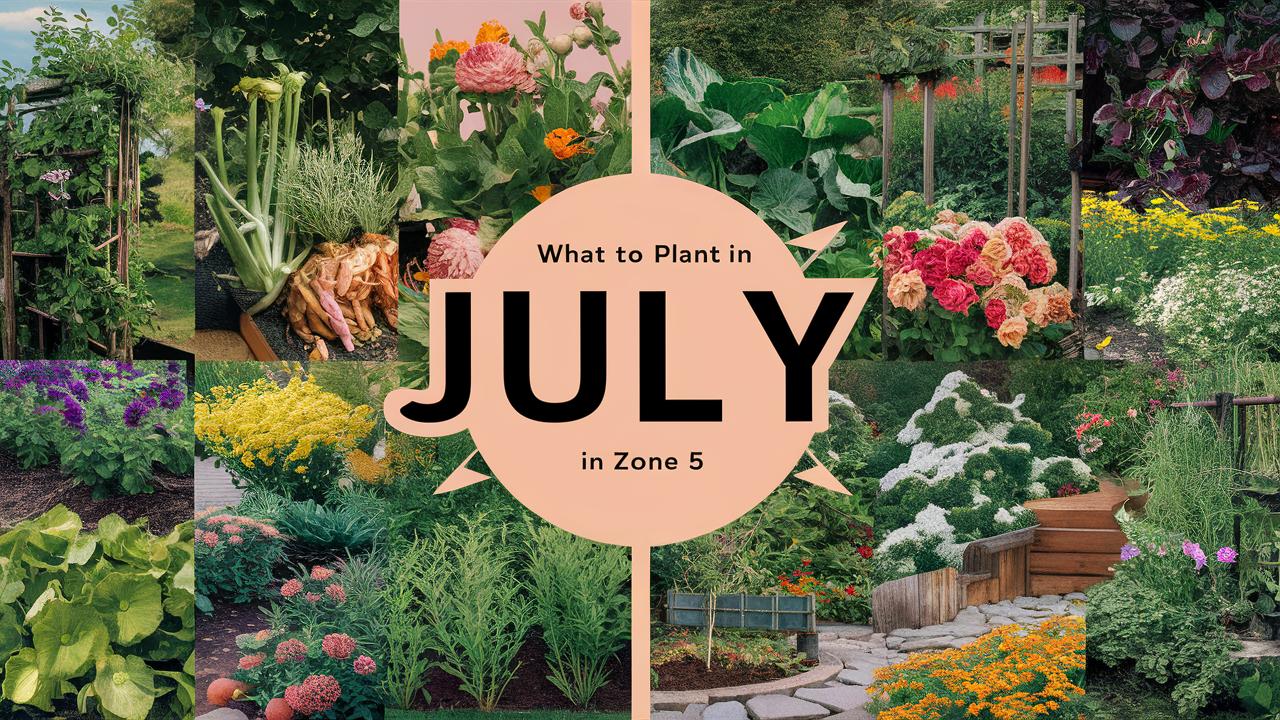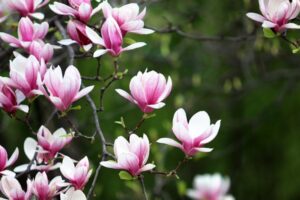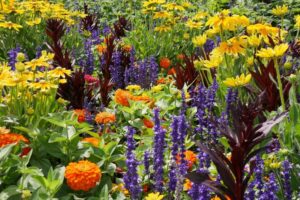This guide will explore an array of suitable plants to sow in July in Zone 5, providing insights into their growth requirements, best practices for planting, and temperature tolerance to ensure a successful harvest or blooms.
Vegetables To Plant
July is a great time to plant fast-maturing vegetables that can be harvested in late summer or early fall. Below are ten vegetables that thrive when planted during this month.
Bush Beans
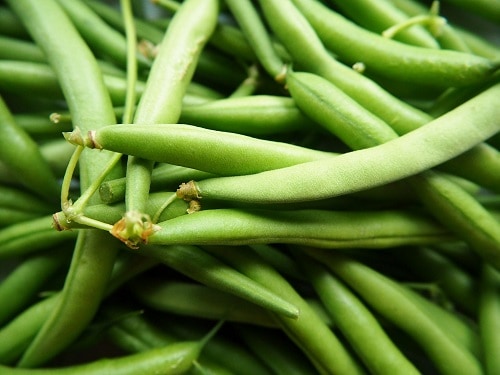
Bush beans are one of the most rewarding vegetables to plant in July. These legumes are quick-growing and typically mature within 50 to 60 days, making them suitable for late summer harvests. They prefer temperatures between 70 to 90°F for optimal growth. Bush beans are particularly hardy and can tolerate slight dips in temperature typical of Zone 5 evenings. When planting, ensure soil temperatures are consistently above 60°F and space your seeds about 1-2 inches apart in rows that are 18-24 inches apart. Keep the soil moist to help accelerate germination, which typically takes about 7-10 days.
Carrots
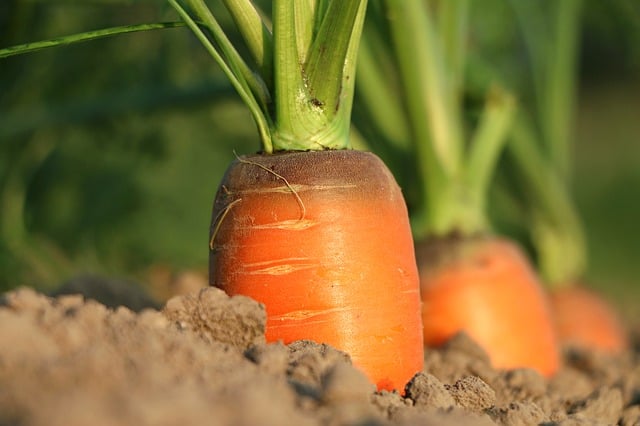
Carrots can be sown in July for a fall harvest. These root vegetables enjoy cooler weather but require warm soil to germinate effectively. Aim for soil temperatures of 55 to 75°F when planting carrots. In Zone 5, you can plant carrots as late as mid-July, allowing them to mature by late September. For optimal results, sow seeds about 1/4 to 1/2 inch deep, making sure to thin seedlings to about 3-4 inches apart once they are established. Carrots can even sweeten after a light frost, enhancing their flavor.
Radishes
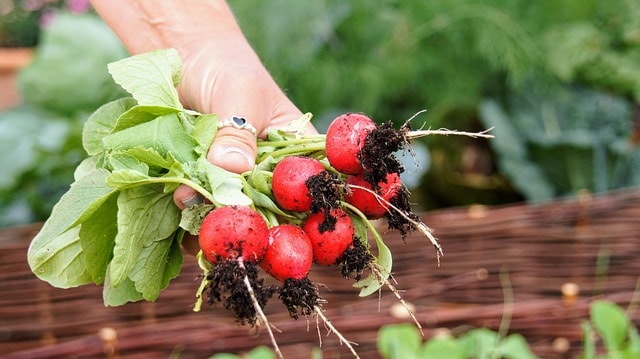
Radishes are another fast-growing vegetable that can be planted in July. They germinate quickly, often sprouting in about 5-10 days, and can be harvested just three to four weeks after planting. Their preference for cooler temperatures makes them perfect for late summer planting, as they thrive in temperatures between 50-70°F. Plant them in well-drained soil, spaced about 1 inch apart and 1/2 inch deep. Consider choosing a variety such as French Breakfast or Cherry Belle for quicker maturity.
Kale

Kale is a nutrient-packed leafy green that grows well in the summer heat and cool fall temperatures. By sowing seeds in July, you can harvest baby kale leaves by late-August or allow the plants to mature by early fall. Ideal growth for kale occurs in temperatures ranging from 60 to 70°F, making it well-suited for late summer planting. Plant seeds 1/4 to 1/2 inches deep, thinning mature plants to around 12 inches apart. Kale is remarkably frost-resistant, meaning late plantings can still yield excellent harvests post-September.
Beets

Beets, with their vibrant roots and greens, are excellent candidates for July planting. They germinate best in cool soil, but their growth accelerates as the temperatures rise. Plant beets in early July if you want a fall harvest, as they typically take about 50-60 days to mature. Sow seeds 1/2 inch deep and 1-2 inches apart, ensuring the soil remains moist during germination. Beets thrive in temperatures between 50°F and 75°F, and the added benefit of the sweetened roots post-frost makes them a delight to grow.
Swiss Chard
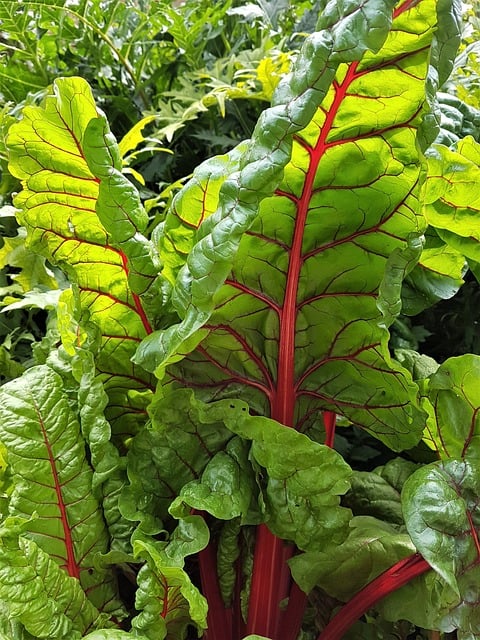
Swiss chard boasts a vibrant array of greens that can be harvested throughout the summer into the fall. July is an excellent time for direct sowing, as Swiss chard can mature in about 50-60 days. It can withstand some heat but prefers cooler weather to crunch out more tender leaves. Plant seeds approximately 1 inch apart and 1/2 inch deep. Swiss chard is tolerant of frost, meaning you can enjoy its vibrant colors and nutrients well into the colder months.
Cucumbers
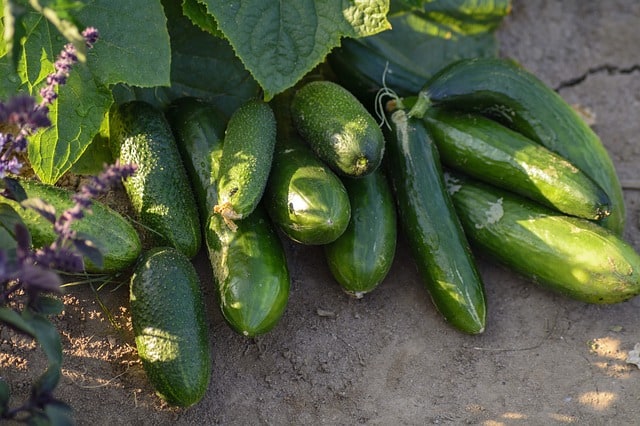
Cucumbers can be planted as late as mid-July in Zone 5 and still produce a bountiful crop before the first frost. These vining plants enjoy the warmth of summer, thriving in soil temperatures of at least 70°F. Cucumber seeds should be sown 1 inch deep and spaced about 36 inches apart if using a trellis. These fast-growing plants can yield fruit in just 50-70 days, so keep your eye out for harvesting opportunities by late summer!
Spinach
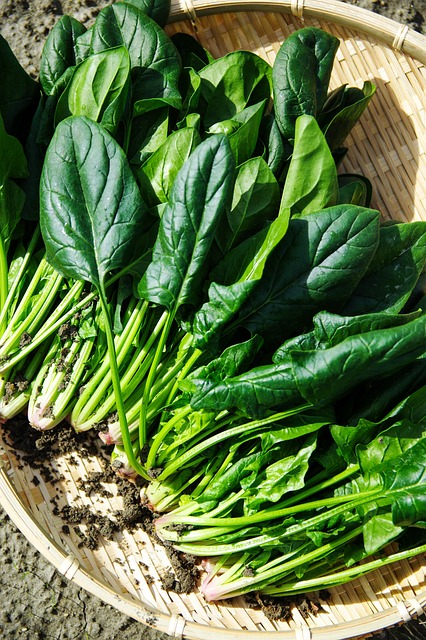
Spinach is another vegetable perfectly suited for planting in July. While it is a cool-weather crop, planting in July allows it to thrive during the early fall. Its preference for cooler temperatures (50-60°F) makes it an ideal candidate for a late summer sowing. Spinach seeds can be sown 1 inch apart and covered with 1/2 inch of soil. It typically germinates in 7-14 days and can be harvested as baby greens about one month after planting.
Zucchini
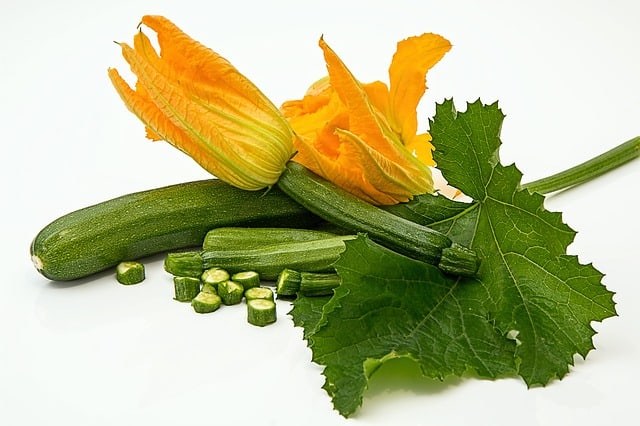
Zucchini is often a favorite for home gardens due to its easy growth and prolific production. If you plant zucchini in early July, you can expect a harvest in just 45-55 days, fitting perfectly into the growing calendar for Zone 5. They love warm soil, ideally between 70-95°F. Plant seeds 1 inch deep and about 36 inches apart to give these sprawling plants enough room to flourish. Zucchini can be enjoyed fresh or stored, and it encourages a bounty of summer dishes.
Late Season Tomatoes
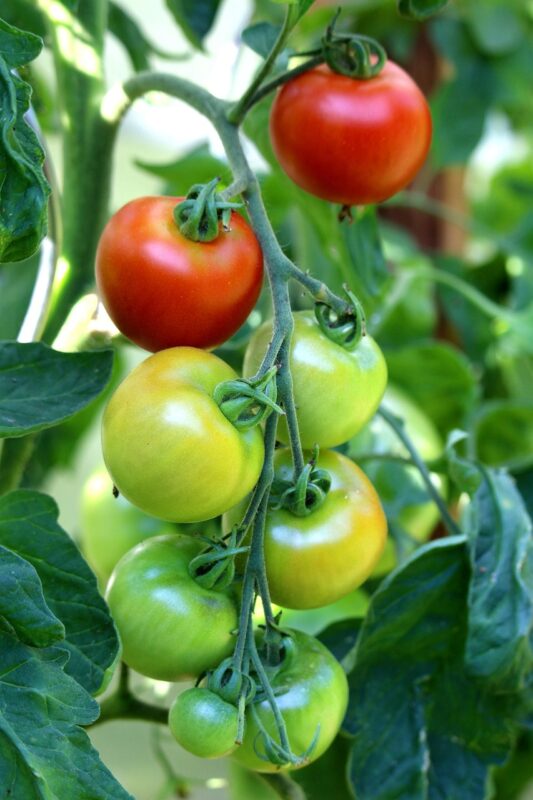
While tomatoes are typically planted earlier, certain late-harvest varieties can be successfully planted in July, particularly indeterminate types that may provide a late crop. Look for varieties like ‘Sungold’ or ‘Sweet 100’, which can take 60-75 days to bear fruit. Plant these with caution, ensuring they have plenty of warmth, with soil temperatures ideally above 70°F. Regular watering and sufficient sunlight will be essential to maximize your yield, even late in the growing season.
Flowers To Plant
July is not just about vegetables; you can also enhance your garden’s beauty by planting flowers that bloom later in the summer and into the fall. Below are ten flowers to consider for planting in July in Zone 5.
Marigolds
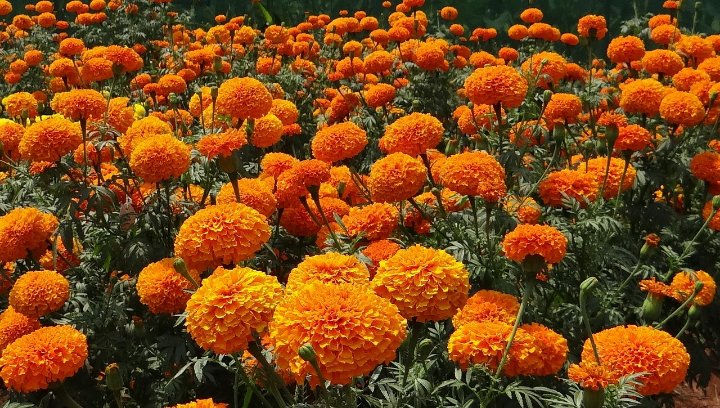
Marigolds are a hardy annual that can be sown directly into the garden in July. These cheerful flowers thrive in warm temperatures, making them perfect for summer planting. They prefer full sun and well-drained soil, growing best when daytime temperatures range between 70°F to 100°F. Plant seeds about 1/4 inch deep; they’ll sprout within 7-10 days. Marigolds not only add vibrant color but also serve as natural pest deterrents, making them an excellent companion plant in vegetable gardens.
Zinnias

Zinnias are another marvelous flower choice for July planting. Available in a variety of colors and heights, they flourish in the summer heat, typically maturing in 60 to 70 days. For optimal growth, sow zinnia seeds in well-drained soil with ample sunlight, ideally when temperatures surpass 65°F. Space them about 12-18 inches apart for air circulation and healthy growth. Zinnias are known to attract pollinators, making them a favorite in butterfly gardens.
Sunflowers

Sunflowers are iconic summer flowers that you can easily plant in July. They are incredibly resilient and thrive in temperatures ranging from 70°F to 90°F. Depending on the variety, sunflowers can mature in 70 to 100 days, providing ample time for growth before potential frost. Plant seeds 1-2 inches deep and 6 inches apart. Beyond their beauty, sunflowers produce seeds that can be harvested in late summer for snacks or birdseed.
Cosmos

Cosmos are excellent for filling your garden with color during the late summer. They are easy to grow, flourishing in warm temperatures, typically in the range of 65°F to 80°F. Plant cosmos seeds about 1/4 inch deep in well-drained soil and water regularly. Expect them to bloom 70-100 days after planting, providing a beautiful spectacle in pink, white, and orange hues. Additionally, they are known to attract butterflies and other beneficial pollinators.
Asters
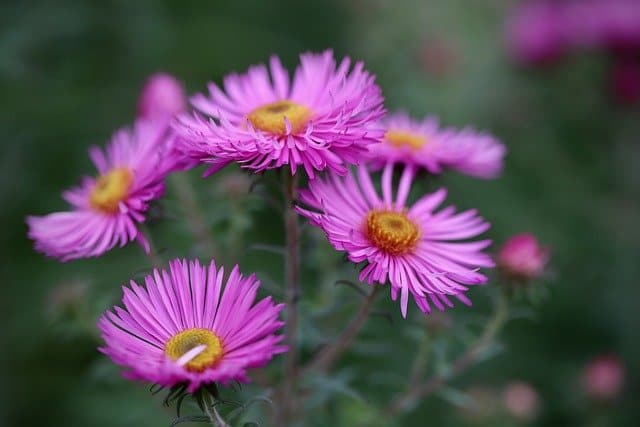
Asters are perennial flowers that can be planted in July for vibrant blooms in late summer and fall. They thrive in a variety of soil types but prefer well-draining conditions and full sun. Asters typically take about 90-100 days to bloom, so it’s best to plant them at the beginning of July, ensuring good development before the frost. It’s wise to space them about 12-18 inches apart to allow for airflow and room to grow. Their brilliant colors will help to extend your garden’s bloom season significantly.
Nigella (Love-in-a-Mist)
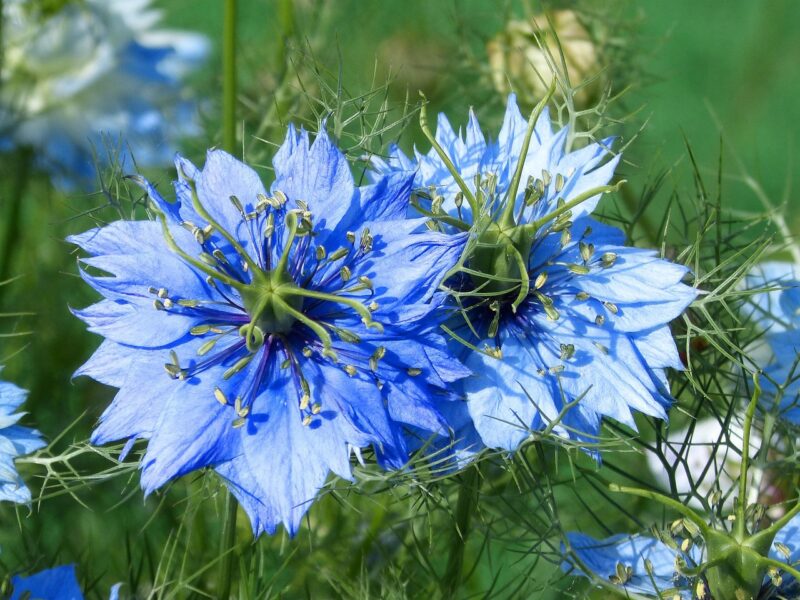
Nigella, known as Love-in-a-Mist, is an ornamental annual that offers unique and enchanting flowers encased in delicate foliage. Best planted in July in Zone 5, Nigella thrives in warmer weather and well-drained soil. Seeds can be planted about 1/4 inch deep and spaced 6-12 inches apart, depending on the desired density. Love-in-a-Mist typically blooms within 70 to 90 days, exhibiting a beautiful blue that attracts bees and butterflies. Additionally, its seed pods are visually appealing once the blossoms fade.
Ornamental Peppers
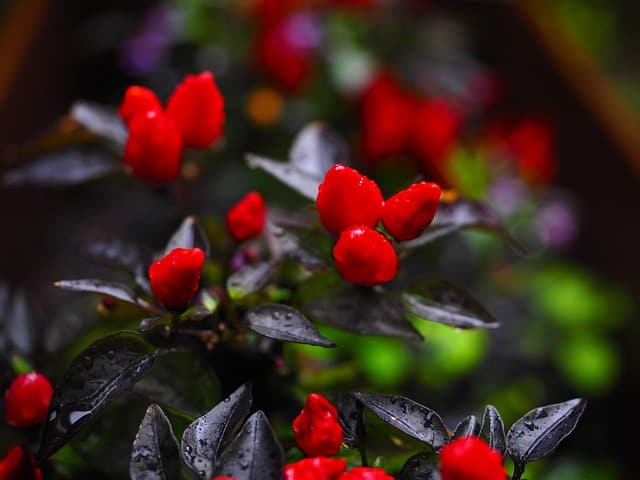
Ornamental peppers can be an unexpected delight in the flower garden. Planting them in July allows for lush growth and vibrant bursts of color by late summer. These plants prefer warm temperatures between 75°F to 90°F and should be spaced about 12-18 inches apart in rich, well-draining soil. While many varieties produce edible peppers, they are primarily grown for their decorative qualities. Their fiery hues can last well into fall, providing visual interest even as other plants begin to fade.
Black-eyed Susans
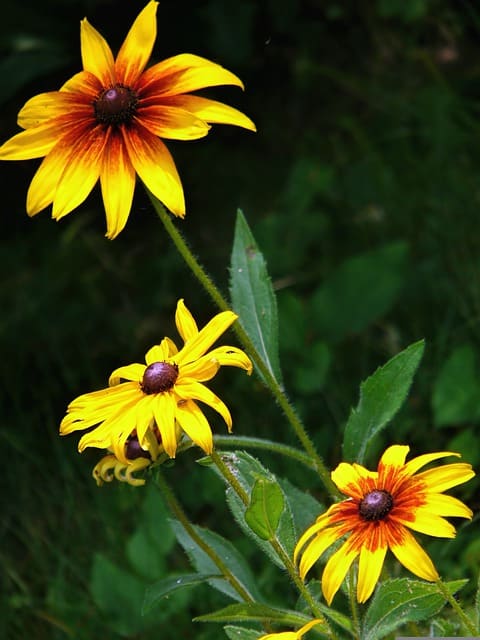
Black-eyed Susans are hardy perennials that are perfect for late summer planting. They bloom from summer through fall and thrive in full sun. Plant seeds about 1 inch deep and 12-24 inches apart to give them the space they need to reach their full height. They typically thrive in temperatures between 70°F to 80°F. Not only do black-eyed Susans provide beautiful, daisy-like blooms, but they also attract pollinators and provide food for birds in the winter.
Penstemon
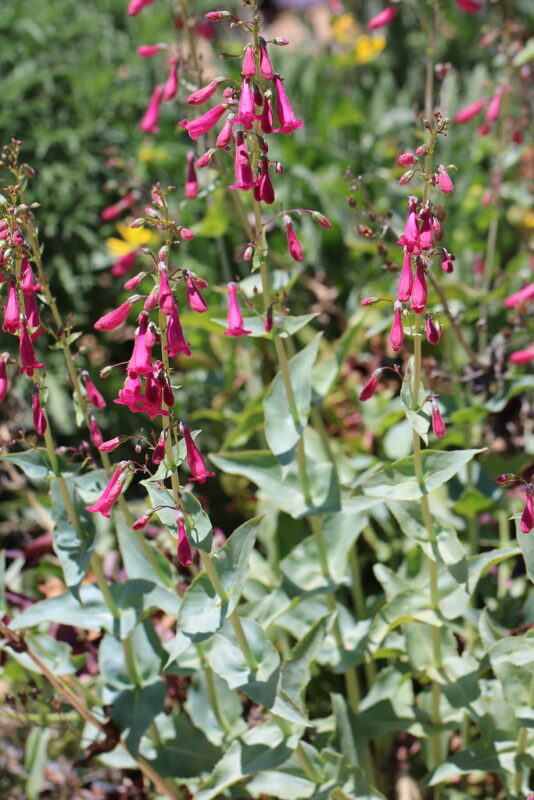
Penstemon, or beardtongue, is a perennial known for its striking flowers that bloom from late spring to mid-summer, making July a fine time to establish new plants. Ideal for attractively colored borders or wildflower gardens, penstemon prefers well-drained soil and can flourish in a wide range of temperatures. It typically requires about 70-80 days to mature after planting, so space seeds 12-18 inches apart for proper growth. These flowers not only add beauty but are also beneficial for hummingbirds.
Phlox
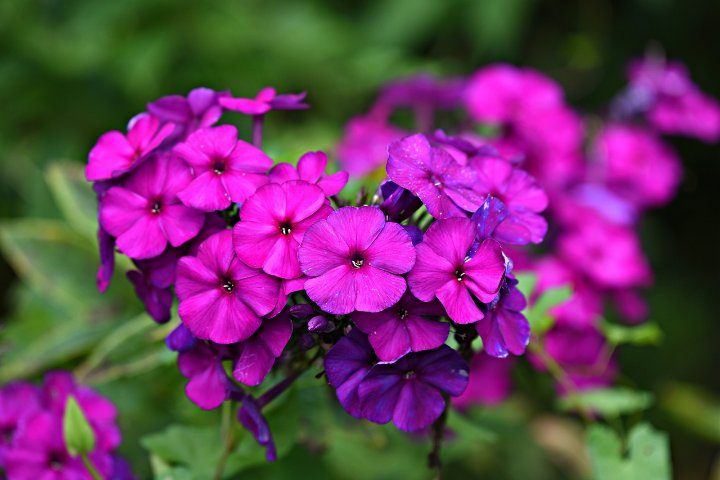
Phlox is a versatile flower, with varieties that thrive both as perennials and annuals. In July, you can sow seeds or transplant established starts for flowering come fall. Phlox prefers temperatures between 60°F to 80°F and does best in well-draining soil that retains some moisture. Set plants approximately 12 inches apart, and expect a blooming period lasting several weeks. Not only does phlox present cheerful flowers, but it also draws bees and butterflies into your garden, enhancing its ecological benefit.
Herbs To Plant
Herbs can be an essential part of any garden, both for culinary use and their aromatic appeal. July offers a suitable window for planting many herb varieties that thrive in warmer conditions. Here are ten herbs that you can plant during this month in Zone 5.
Basil
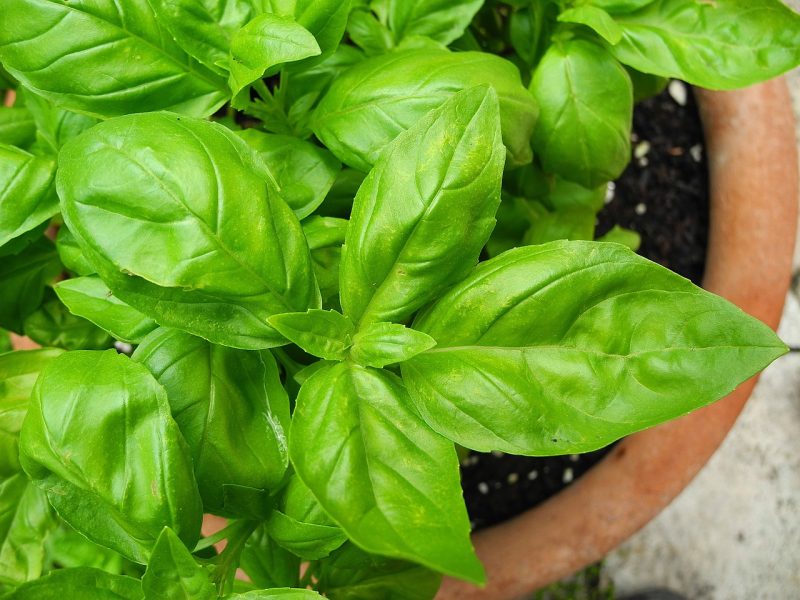
Basil is a favorite culinary herb that thrives during the summer months. Plant basil in early July to enjoy vibrant leaves and aromatic stems by the end of summer. Basil prefers warm temperatures, ideally around 70°F to 85°F. Seeds should be sown about 1/4 inch deep and spaced 12 inches apart in full sun. Regular harvesting of leaves will encourage continued growth and production. Remember, basil is sensitive to frost, so be sure to harvest before the first chill.
Cilantro
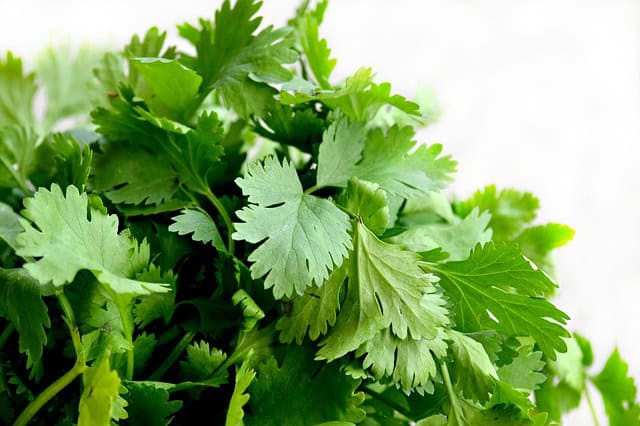
Cilantro is a versatile herb that can be planted in July, particularly in its early part when temperatures are still favorable. It grows best in cooler weather but can still thrive in the mid-summer heat, especially as the days begin to cool down in August. Plant cilantro seeds 1/4 inch deep and 12 inches apart. Expect germination in 7-10 days. It’s great for salads, salsas, and garnishing various dishes. Harvest the leaves while young for the best flavor, and be mindful that cilantro tends to bolt in extreme heat.
Dill
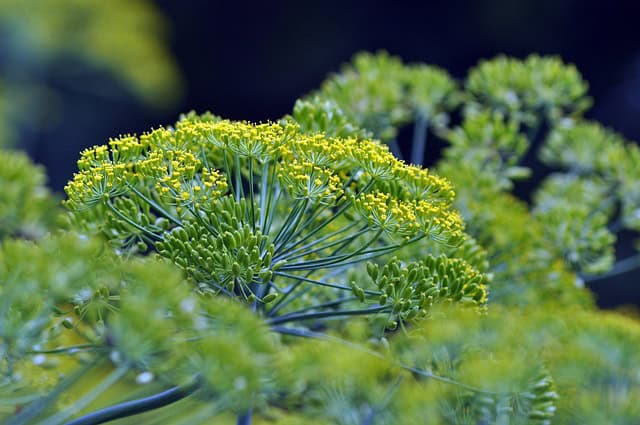
Dill is an herb well-suited for July planting, thriving in warm weather and enjoying sunny spots. This herb grows rapidly, typically maturing in about 40-60 days. Sow dill seeds approximately 1/4 inch deep and 12 inches apart to ensure adequate growing space. Dill is excellent for seasoning fish and pickling cucumbers and attracts beneficial insects to your garden. Remember that dill tends to winter kill, so ideally enjoy it during the warmer months.
Chives

Chives are perennial herbs that can be planted in July, providing tasty green tops for use throughout the growing season. They prefer full sun and well-drained soil, thriving in temperatures between 60°F to 75°F. Plant chive seeds or transplants 1/4 inch deep and about 12-18 inches apart. They typically take a few weeks to establish but allow for an enduring supply of fresh greens. The edible flowers also add aesthetic appeal and can be used as a garnish.
Thyme
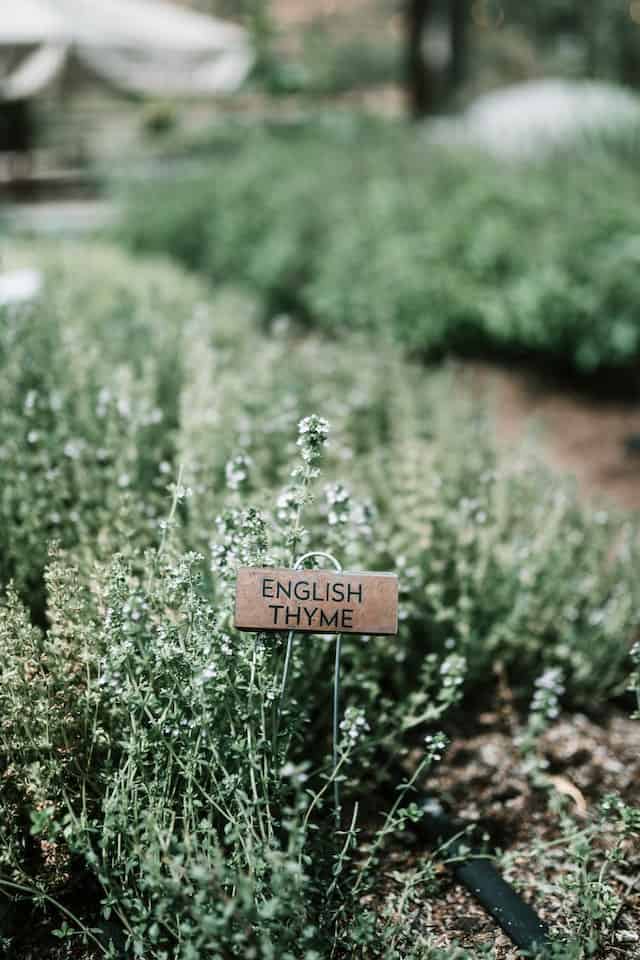
Thyme is a drought-tolerant herb that can flourish even in poor soil conditions. July is a great time to plant new thyme plants, as they prefer warm weather and bright sunlight. For optimal growth, plant thyme seeds 1/4 inch deep and spaced about 12 inches apart. This herb thrives in temperatures around 70°F to 80°F and typically matures within 60 days. Thyme is an integral part of numerous culinary traditions, and its strong flavor can enhance meats, vegetables, and stews.
Oregano
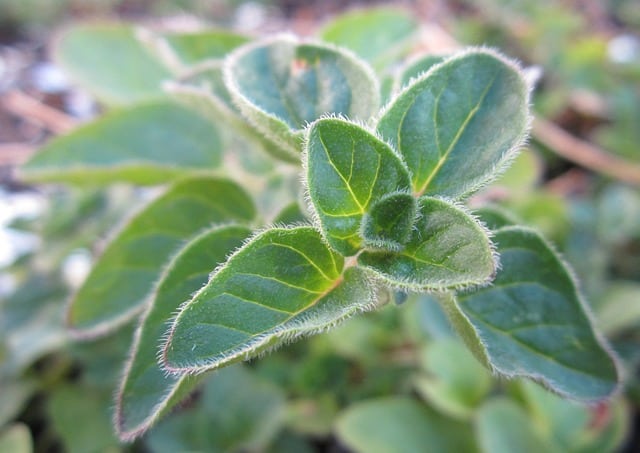
Oregano is another herb that thrives in warm temperatures, making July a perfect time for planting. Like thyme, oregano prefers well-drained soil and can tolerate some drought once established. Sow seeds about 1/4 inch deep and 12 inches apart; expect a germination period of about 14-21 days. Oregano is a staple in Italian cuisine, used mainly for sauces, meats, and various dishes. Its flavor intensifies after drying, making it handy for year-round use.
Mint
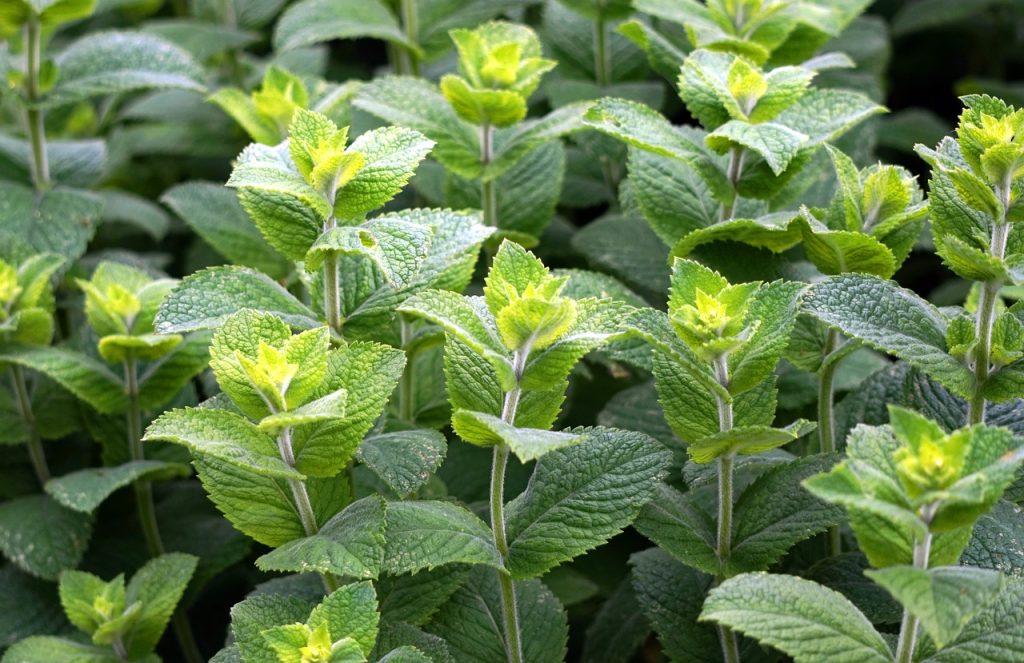
Mint is a rampant perennial that can be planted in July, though be cautious to contain its spread! This herb thrives in well-drained, consistently moist soil, preferring temperatures of 60°F to 80°F. When establishing mint, plant seeds or cuttings about 1/4 inch deep and 12 inches apart, making sure to place it where it can be contained, such as in a pot or garden bed with barriers. Mint can be harvested within weeks, serving fresh leaves for teas, desserts, and cocktails.
Parsley
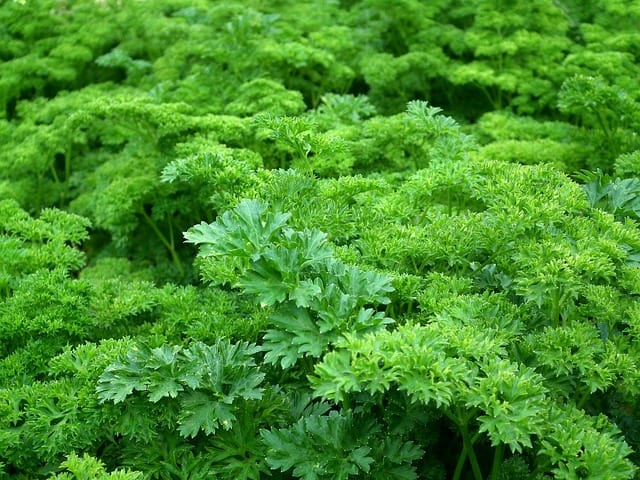
Parsley can be planted in July, providing an attractive leaf garnish for many dishes. This biennial herb grows well in both full sun and partial shade and prefers moderate temperatures. Plant seeds about 1/4 inch deep and 12-24 inches apart. Parsley germinates slowly, taking 14-30 days, but once established, it adds an abundance of flavor and nutrition to meals. As a biennial, parsley will live through the first frost and stand ready with fresh leaves for spring.
Fennel
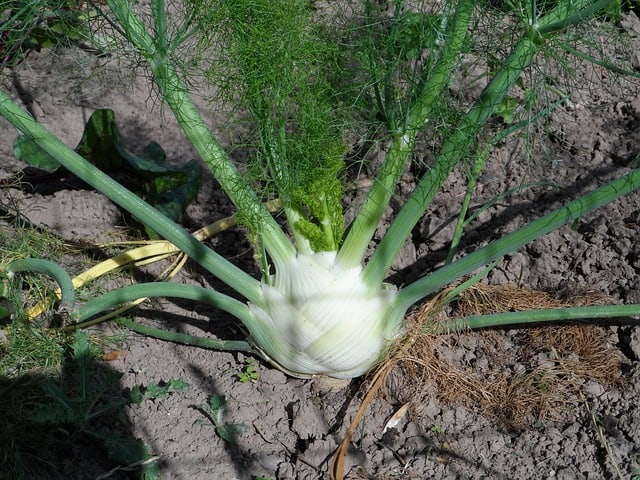
Fennel, both a culinary herb and a vegetable, can be planted in July to provide flavorful fronds and an edible bulb. Fennel prefers warm temperatures and does best in full sun, ideally between 70°F and 80°F. Plant seeds approximately 1/2 inch deep and 12 inches apart. Fennel takes about 80-100 days to mature; the fronds can be harvested continuously as they grow. The unique flavor of fennel complements various dishes, particularly those involving fish or roasted vegetables.
Lemon Balm

Lemon balm is a fragrant perennial herb that thrives in the summer heat and can be grown from seeds or cuttings. It grows best in full sun or partial shade and prefers temperatures ranging from 60°F to 80°F. Sow seeds about 1/4 inch deep and 12 inches apart. Lemon balm’s refreshing scent and flavor lend themselves well to teas, cocktails, and simmering potpourri. After establishing in July, it will offer fresh leaves for culinary use into the fall.
Landscape Plants To Plant
Transforming your garden into a vibrant landscape can be achieved with a variety of plants that can be planted in July in Zone 5. Here are ten landscape plants to consider, enhancing both beauty and functionality.
Perennial Sunflowers

Perennial sunflowers are robust plants that can provide bursts of color and height in your garden. Late July is suitable for planting cuttings or divisions. These hardy plants thrive in full sun and can handle a range of soil conditions while preferring good drainage. Once established, perennial sunflowers return year after year, blooming in late summer and providing a source of food for local wildlife.
Coneflowers
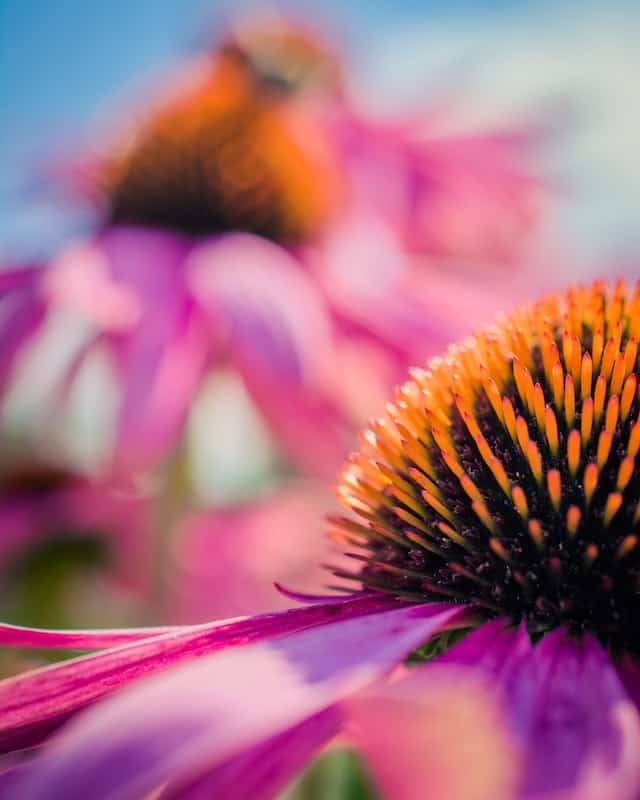
Coneflowers, or Echinacea, are resilient perennials that thrive when planted in July. They prefer well-drained soil and full sun, making them perfect for sunny areas. Coneflowers can tolerate moderate drought and bloom in varied colors, reaching a height of 24-36 inches. Plant them about 12-18 inches apart for proper air circulation, and you can expect blooms by late summer. Not only do cone flowers attract butterflies, but they are also known for their medicinal properties.
Daylilies
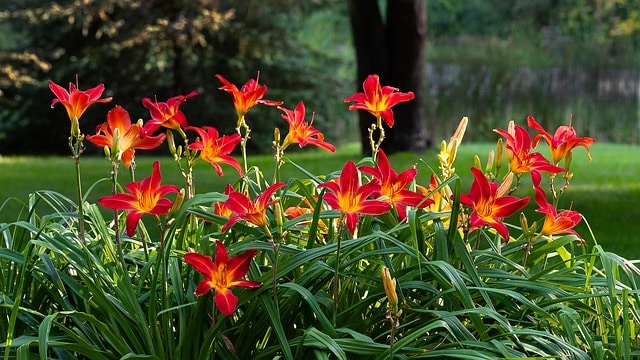
Daylilies are colorful perennials famous for their beautiful blooms and versatility. They can be planted in July as divisions or bare-root plants and adapt well to various soil types, flourishing in conditions ranging from full sun to partial shade. Space daylilies approximately 18-24 inches apart for best growth, and expect blooms starting in late summer. Their vibrant colors improve both curb appeal and privacy when strategically planted.
Hostas
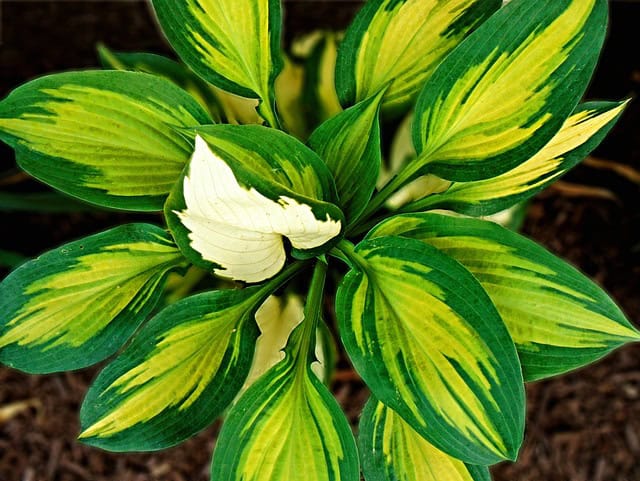
Hostas are perennial shade-loving plants that can enhance landscape areas with less sunlight. July is a good time to plant hostas, as the warmer soil helps them establish roots before fall. Choose from a variety of sizes and colors, spacing plants about 12-36 inches apart, depending on the variety. Hostas thrive in temperatures of 60°F to 80°F, and the foliage often survives frost, providing visual interest year-round.
Ornamental Grasses
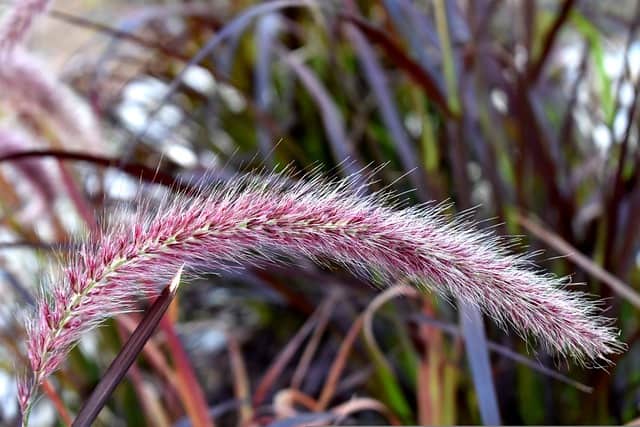
Ornamental grasses can add texture and movement to your landscape. Suitable varieties for planting in July include Miscanthus and Panicum. These grasses prefer sunny spots and can endure a variety of soil conditions, thriving in temperatures above 70°F. Plant them about 12-36 inches apart for a natural look. Once established, ornamental grasses offer year-round interest, providing visuals and habitat for local wildlife.
Sedums

Sedum, commonly known as stonecrop, is an excellent drought-tolerant succulent that can be planted in July. These hardy plants excel in full sun and well-draining soil. Plant sedum seeds or cuttings about six inches apart to allow for growth. Sedums bloom in late summer, attracting pollinators and offering vibrant color to your garden. They also have low maintenance requirements, making them a great choice for busy gardeners.
Lilies

Lilies are a popular garden choice due to their stunning blooms and sweet fragrance. July is a prime planting time for summer-blooming lilies. Choose from various types, such as Asiatic, Oriental, or Trumpet lilies, which can flourish in well-drained soil with plenty of sunlight. Plant lily bulbs 6-12 inches deep and space them evenly for proper air circulation. Expect robust blooms in late summer and a lush garden presence.
Russian Sage
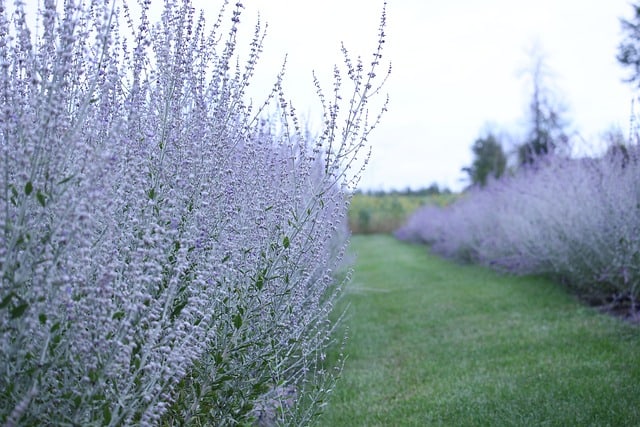
Russian Sage, with its aromatic gray foliage and striking blue flowers, is a perennial that can be planted in July. It thrives in full sun and is drought-resistant, making it ideal for low-maintenance gardens. Plant Russian Sage 2-3 feet apart, and you can expect height up to 3-4 feet at maturity. This versatile plant not only attracts pollinators but also provides a beautiful backdrop in landscaping.
Astilbe

Astilbe is a perennial that brightens up shady spots in your garden. They can be planted in July, ensuring ample time to establish roots before fall. Astilbe thrives in damp soil and partial shade, preferring temperatures between 60°F and 75°F. Space them about 18-24 inches apart to allow for growth and blooming. Their plumed flowers make a lovely display, often blooming in shades of pink, red, or white, providing color in places where many other plants struggle.
Rhododendron
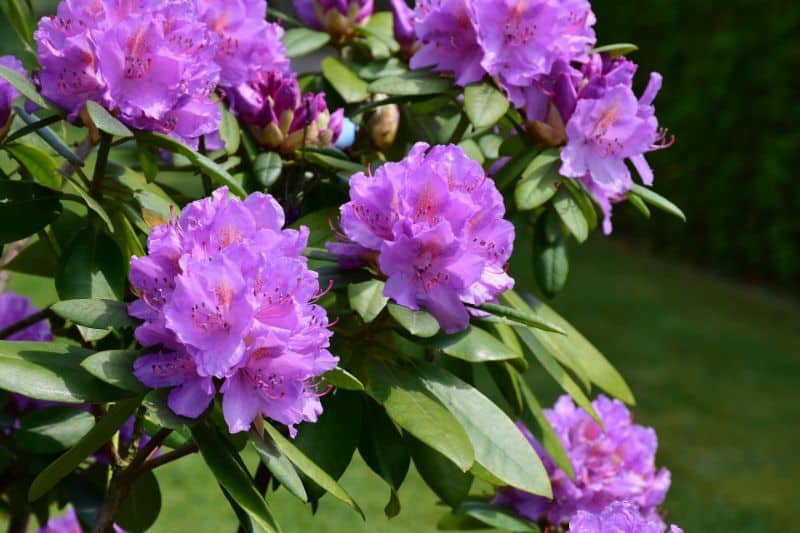
Rhododendrond’s vibrant blooms and dense foliage make them an excellent choice for landscaping in July. Consider planting potted rhododendrons to benefit from well-established root systems. They thrive in shady areas and well-drained, acidic soil while preferring temperatures around 60°F to 70°F. Space them 3-4 feet apart, allowing these stunning shrubs ample room to grow. Once established, they provide beautiful blossoms in spring and summer while also serving as an impressive foil for other plants.


